| |
|
| |
 |
| |
Persimmon Leaves Front and Back |
Identification:
Check beneath the tree for fallen leaves. The leaves are
simple,
alternate,
entire, glossy above and paler beneath. Each leaf
is between 4 inches and 6 inches long. Note the
alternate branching on this tree.
| |
|
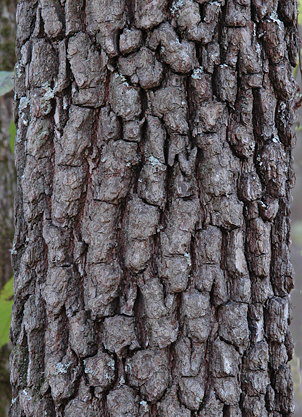 |
|
|
Persimmon Bark |
The bark of the Persimmon is one of
its best identifying characteristics. The bark is dark gray to
black, up to 1 inch thick, and develops into thick square blocks
divided by deep dark orange fissures.
| |
|
| |
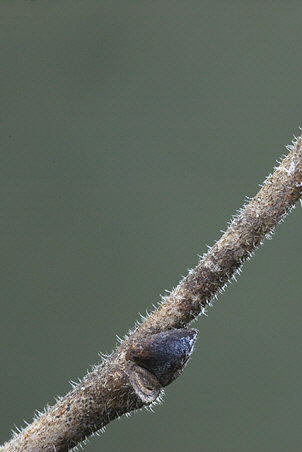 |
| |
Persimmon Bud and Leaf Scar |
The twigs of the Persimmon are
slender and gray to reddish brown in color and lightly hairy. The
lenticels are
orange. Leaf scars have a single prominent
crescent-shaped bundle scar. Buds are small, about 1/8
inch long, closely appressed, reddish black, with two
overlapping scales. Note the distinctive shape of the buds.
| |
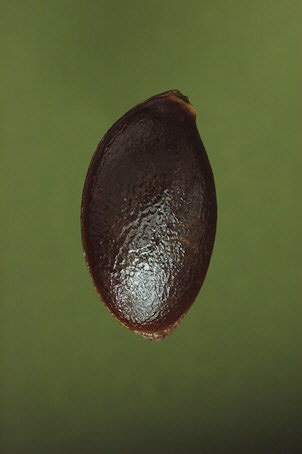 |
|
Persimmon Seed |
| |
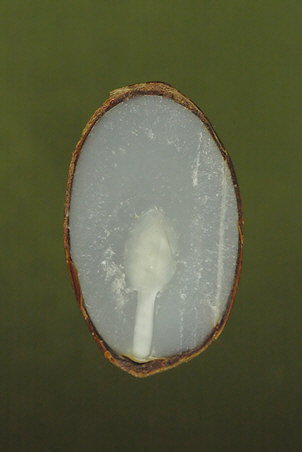 |
|
Persimmon Seed "Spoon" |
Other Uses
and Lore:
A variety of
wildlife feast on the fruit. Birds, including the northern
bobwhite, are known to eat it, and it is relished by flying
squirrels, foxes and white-tailed deer. Most famously, it is
enjoyed by the opossum. When John James Audubon painted his
portrait of the opossum, he chose to show it high in a persimmon
tree. Look along the trail for persimmon seeds – they are
often found in the scats.
If you find
persimmon seeds you can (with adult supervision) split the seeds
lengthwise with a sharp knife to see the white kernel inside.
According to folklore you can forecast the severity of the coming
winter by the shape of the kernel. If the kernel is shaped
like a spoon (or shovel) there will be lots of snow. If it is
shaped like a fork, a mild winter is to be expected. If it is
shaped like a knife, expect bitter, cutting winds.
The Trail From
Station Three to Station Four
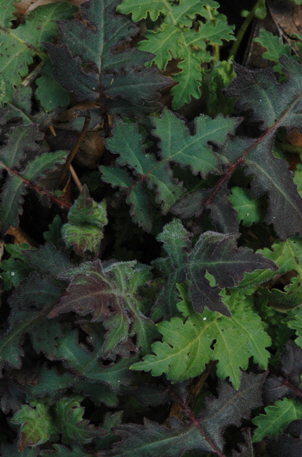 |
| Wildflower
Foliage Early Winter |
As you walk the
short distance between Station Three and Station Four look along the
trail for seeds from the fall. You can often find green
foliage among the leaves if you look closely. In mild winters
you can often find some of our early-blooming wildflowers in late
January. Station Four is a short distance and is on the left
side of the trail.
|

